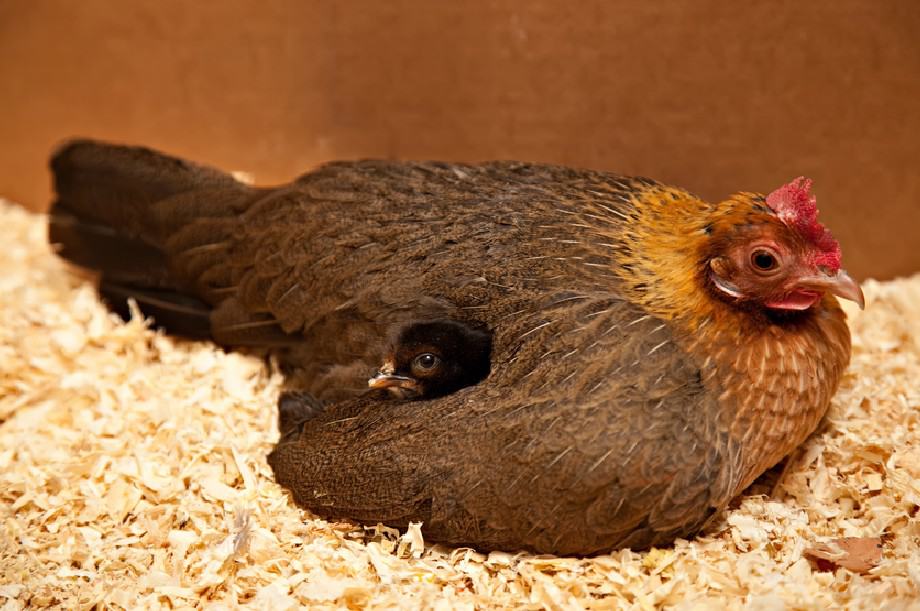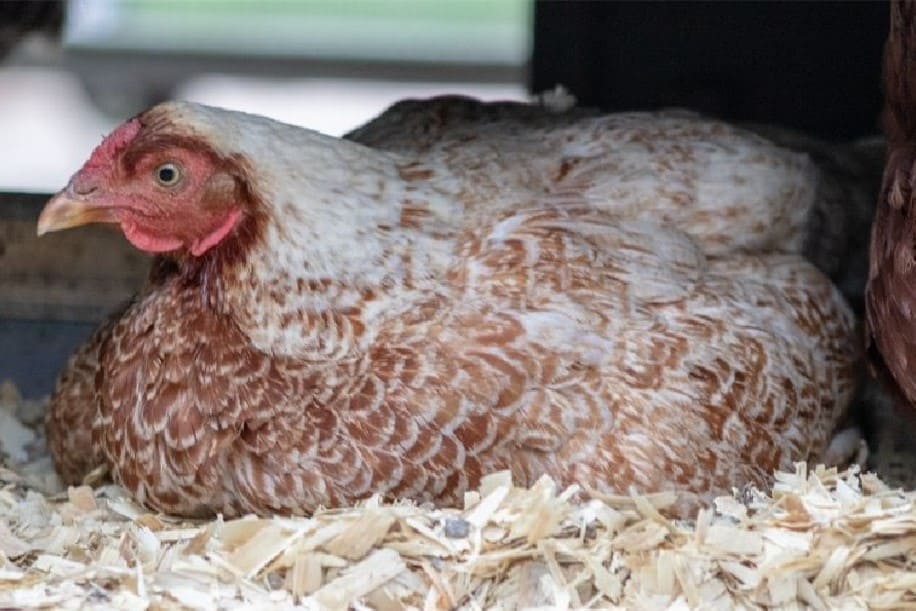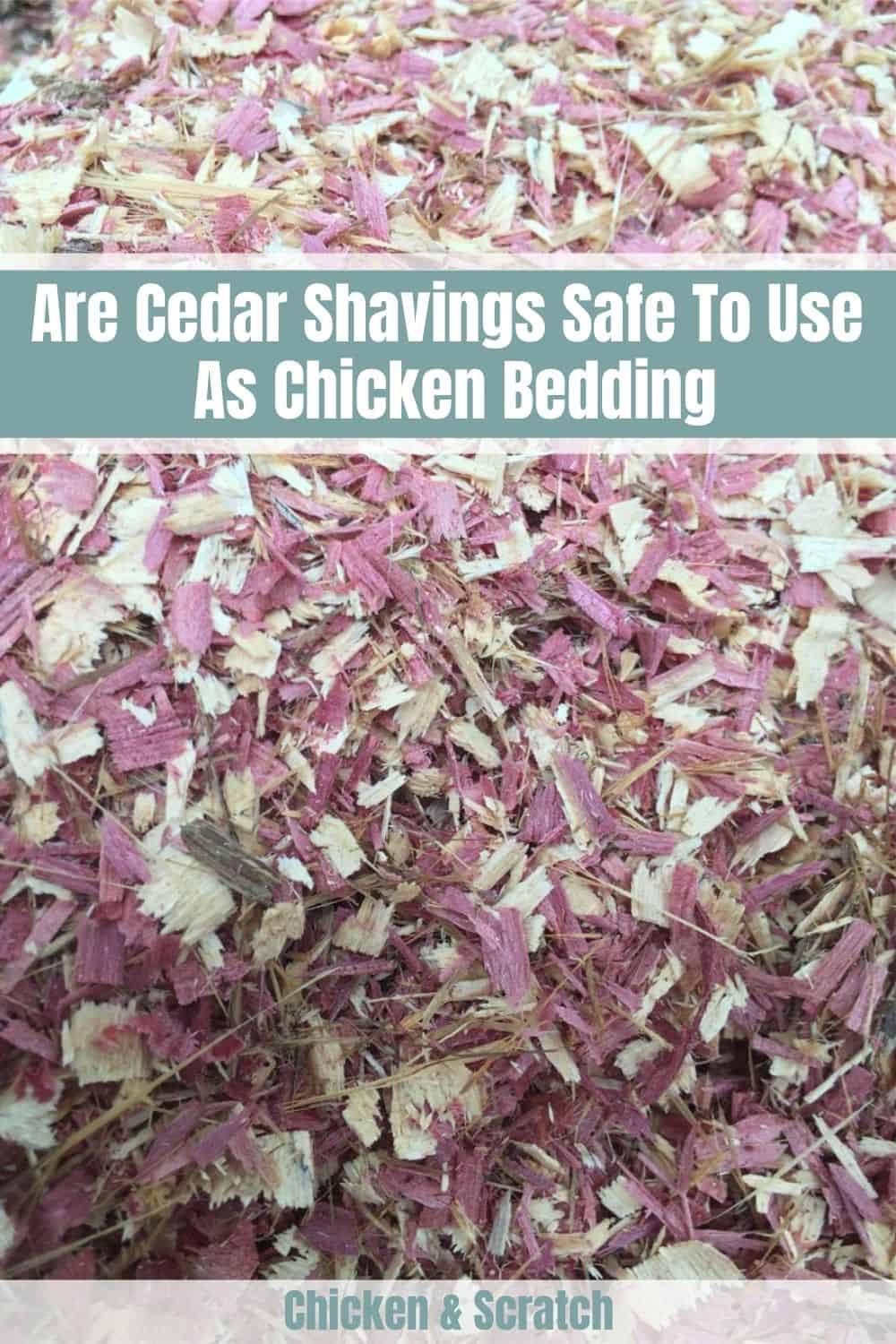There have been many discussions and testimonies about cedar and chickens. I’ve been looking for studies and papers to prove the true effect of cedar shavings on chickens, but there’s no hard evidence to back up the claim. In this article, we will look at all angles to better understand the alleged “harmful effects” of cedar shavings on chickens.
Making the Chicken Beddings
The crucial decision of which type of chicken coop bedding to use is part of the planning process for raising chickens. Bedding serves many functions aside from comfort; it must also provide odor control, absorption, and a place for chickens to lay their eggs. A filthy, damp chicken coop is ideal for the growth of bacteria and parasites.
It is very important to select the proper bedding for the health of your chickens. Unwanted bacteria, odors, mildew, pathogens, and flies will be kept out of the coop by using good bedding.
The proper use of coop bedding, also known as litter, is critical for keeping chickens healthy and odor-free. There are numerous types of litter, but they must all be able to absorb moisture, keep the floor warm, and allow the chickens to dust.
What makes the best chicken bedding?
There are numerous factors to think about when it comes to chicken bedding. We are concerned about cost, but we also want to keep our hens warm, dry, and comfortable, as well as keep the coop odor to a minimum. The use of bedding that absorbs the feces of the chickens extends the time between cleanings.
With so many factors to consider, picking the best one is difficult. Each type of bedding has advantages and disadvantages depending on your situation. Hemp, straw, pine shavings, pine pellets, and wood shavings are the most common types of bedding.
The most common type of chicken bedding is wood shavings, which can be purchased at feed stores or scrounged from woodworkers. Wood shavings have a pleasant aroma, are highly absorbent, and do not compact.
However, not all types of wood shavings, especially cedar shavings, are beneficial for your chickens. Some wood shavings, specifically cedar shavings, are said to contain toxic elements. Cedar is said to harm the chickens rather than comfort them.
What Are Cedar Shavings?

Cedar shavings are cedar tree wood shavings. Cedar wood’s inherent oils produce a pleasant odor that repels insects and snakes, making it a natural pest deterrent as well as a deodorant to mask pet odor.
Cedarwood produces natural insecticides known as phenols and acids, both of which are aromatic hydrocarbons. When mice and other rodents are exposed to cedar shavings, harmful phenols enter the bloodstream via the respiratory tract, causing liver damage that can be fatal. The acids emitted harm the animals’ lungs and trachea.
Is Cedar Shavings Safe To Use For Chickens?
Because of the overpowering scent, cedar shavings are not recommended for use as chicken beddings or litter, especially for chicks. Cedar shavings contain natural oils that are toxic to chickens and can cause respiratory issues.
Plicatic acid, found in cedar shavings, has been shown in studies in mammals including humans and rats to damage cells in the lungs and airways when inhaled, causing unpleasant symptoms and possibly long-term asthma.
Aside from the negative reactions of Plicatic acid on the respiratory systems of chickens, cedar shavings contain hydrocarbons and strong-smelling chemicals that can seriously harm the chickens’ livers. The dust from the shavings is also carcinogenic in nature, causing harm to humans, chickens, and other animals.
According to research, chicks raised using cedar shavings as bedding get sick easily and die young. However, the harmful effects of cedar take time before it starts showing.

Is Cedar Shavings Really Toxic?
The toxicity of cedar to chickens has long been known, but with the rise of internet discussions and forums available on the internet, this has become questionable.
Many chicken raisers, as well as scientists and experienced hatcheries, are conducting their own studies to determine the truth about the effect of cedar shavings on chickens. Is it true that the toxicity of cedar shavings can harm chickens? Is it true, or is it a myth?
Studies on mammals specifically humans and rodents like rats, provide evidence for cedar’s negative effects. There have been no conclusive studies proving that cedar is a toxic material for chicken coop bedding. All of the information available about the ‘toxicity’ of cedar to chickens is based on studies conducted in humans, rats and other insects.
Because birds, including chickens, have weaker respiratory systems than mammals and rodents, cedar shavings are thought to be harmful to them.
Why are there no studies done on the chickens?
Many chickens live only a year or two before being slaughtered, and the vast majority are raised on wire floors, not bedding.
Broiler hens do live on bedding for a few weeks before slaughter, but only for a few weeks. The meat chickens with the longest lifespans may only live a few months.
Scientists don’t need to look into the long-term effects of cedar bedding on poultry health because chickens don’t live that long in the industry.
Basis As To Why Cedars Are Considered Threat to Chickens

Because cedar contains cedrene, a strong-smelling substance known to upset the respiratory systems of insects, it is thought to be harmful to chickens as well. However, it is unclear to what extent the cedar becomes harmful to chickens.
Cedar has been shown in studies to irritate the respiratory systems of lab rats. When plicatic acid is inhaled, it degrades the cells along the airways to the lungs. A well-documented case of occupational asthma caused by red cedar wood was used to determine whether cedar can truly destroy respiratory cells in humans.
They used human and rat cells, tissues from the lungs of rats, and tracheal tissue, then exposed them to a plicatic solution to further investigate. The cells did disintegrate. Take note that they are using humans and rats instead of chickens.
Terpenes found in cedarwood oil have been linked to a variety of psychological and physiological benefits. According to one study, cedarwood oil increased immune system natural killer cell activity, increased parasympathetic neural activity, and decreased sympathetic nervous activity.
According to decades of research, all wood dust, including cedarwood dust, is now classified as a human carcinogen. Workers who are exposed longer to wood dust from pine and cedar have a higher risk of cancer, according to the study.
Cedar shavings that are used as bedding are thought to grow cancer tumors in mice. A study was conducted on a special breed of mice obtained from a US facility. The mice had cancers in their livers and mammary glands, but when they were sent to a lab in Australia, the cancers went away.
They imported an Australian mouse and housed it in the lab with cedar bedding to identify what was causing the problem. In Australian mice, the number of mammary cancers increased. According to the researchers, the growth of the tumors is linked to the cedar beddings used.
Numerous studies have shown that cedar beddings significantly increase abnormal enzyme activity and that are killing healthy liver cells. Cedar makes it difficult for the liver to fight toxins, which leads to serious liver damage. The element giving the cedar a strong smell is the one causing liver dysfunction.
Possible Health Issues Caused By Cedar Shavings

Plicatic acid exposure can cause a variety of respiratory problems. If you use cedar shavings as bedding in your chicken coop, you must keep an eye out for signs of respiratory or liver disease.
Coughing, phlegm, wheezing, and difficulty breathing are all symptoms of respiratory distress in your chicken. Asthma, chest tightness, rhinitis, bronchial hyperreactivity, and impaired lung function are all signs of non-visible symptoms.
Cedar shavings can also cause liver damage, which can be fatal. Pale combs and/or wattles, emaciation, frailty, and loss of appetite are all indicators of liver disease in chickens.
If your chickens exhibit any of these symptoms, remove the cedar bedding and replace it with something safer. If they have liver damage, you should take them to their veterinarian as soon as possible to see if it can be reversed.
What makes it applicable to hens if the adverse effects of cedar shavings are based on studies conducted on people and rats?
We can’t be certain that these studies are also applicable to chickens in the same way that they do to mammals because chickens are very different in a variety of ways.
Chickens’ respiratory systems are extremely sensitive. As a result, they are more prone to respiratory system issues than humans. It’d be strange if the plicatic acid affects humans in a bad way, and wasn’t also toxic to them.
Conclusion
Cedar shavings are not safe for hens, according to publications and research done on humans and rodents, because these shavings can harm their lungs and liver. Although no studies on hens have been conducted, cedar shavings are thought to be harmful to them due to their weaker respiratory systems than humans. Inhaling plicatic acid, which is found in cedarwood, can be dangerous.
Why put your chickens in danger if you’re not convinced? There are numerous other types of bedding that are certain to be safe. Choose between sand and chopped straw. Both of these alternatives are viable.
Keep your chicken coop bedding clean, and you’ll have happy, healthy chickens living in a comfortable, fresh-smelling, fly-free coop.
Proper ventilation is essential for protecting your animals from the hydrocarbons released by their bedding material. You should not be afraid to use cedar bedding because you are concerned that it will harm your chickens. It can help control mites and keep the coop smelling fresh when combined with other bedding materials and used in conjunction with adequate ventilation.


Joseph Hudson has been raising chickens for over 15 years. In 2018, he completed the Agriculture & Natural Resources program at Mt. San Antonio College. He currently raises over 1400 chickens on his 7.5-hectare farm. He keeps sharing his experience on raising healthy and happy chickens on Chicken Scratch The Foundry.








– “It’d be strange if the plicatic acid affects humans in a bad way, wasn’t also toxic to them.”
Given the many physiological differences between humans and birds (we’re not even in the same taxonomical class) no, that would not be strange at all. Chocolate is toxic in normal amounts – potentially even deadly – to dogs. Do you find it strange that it is not toxic to humans when we’re both mammals?